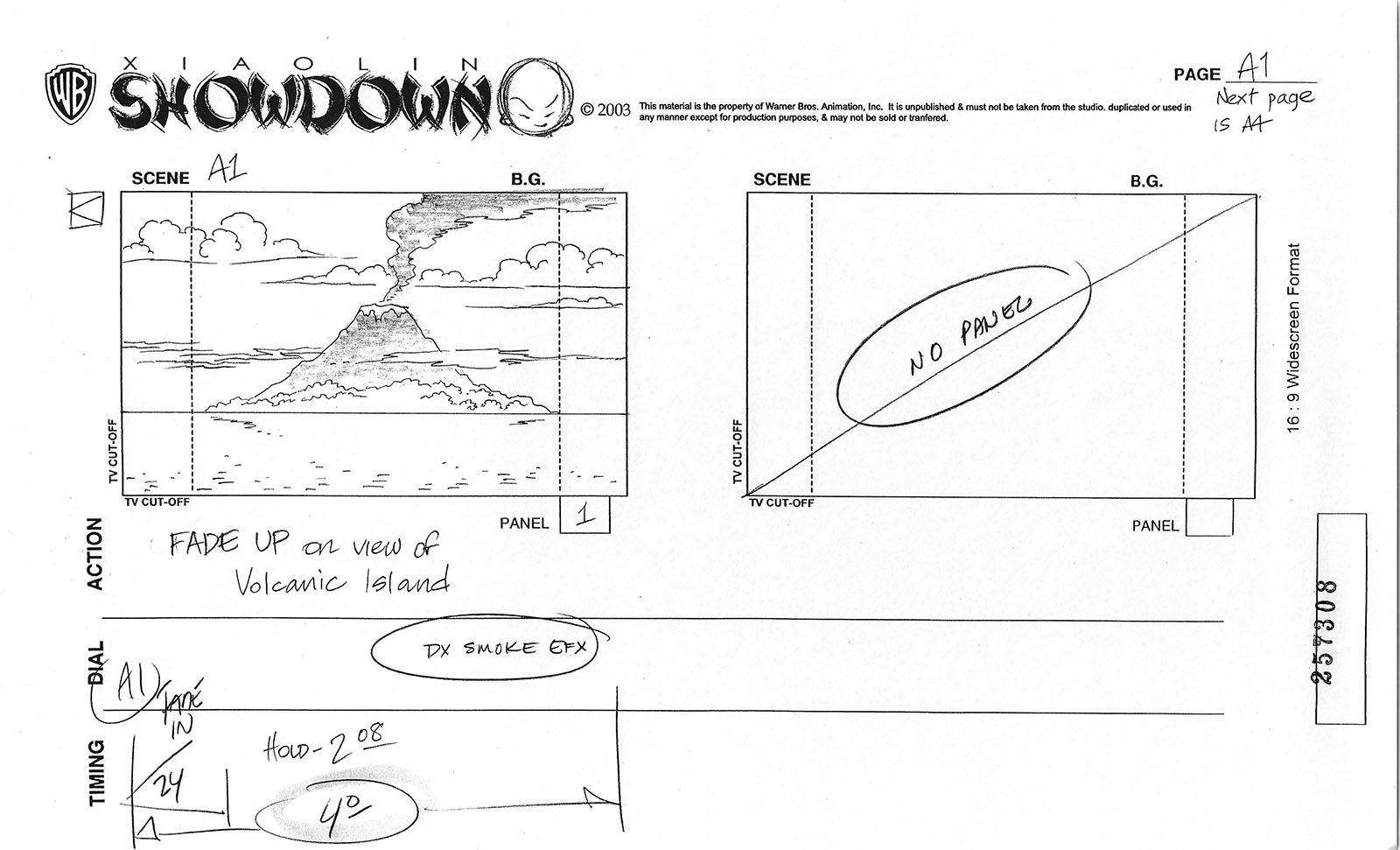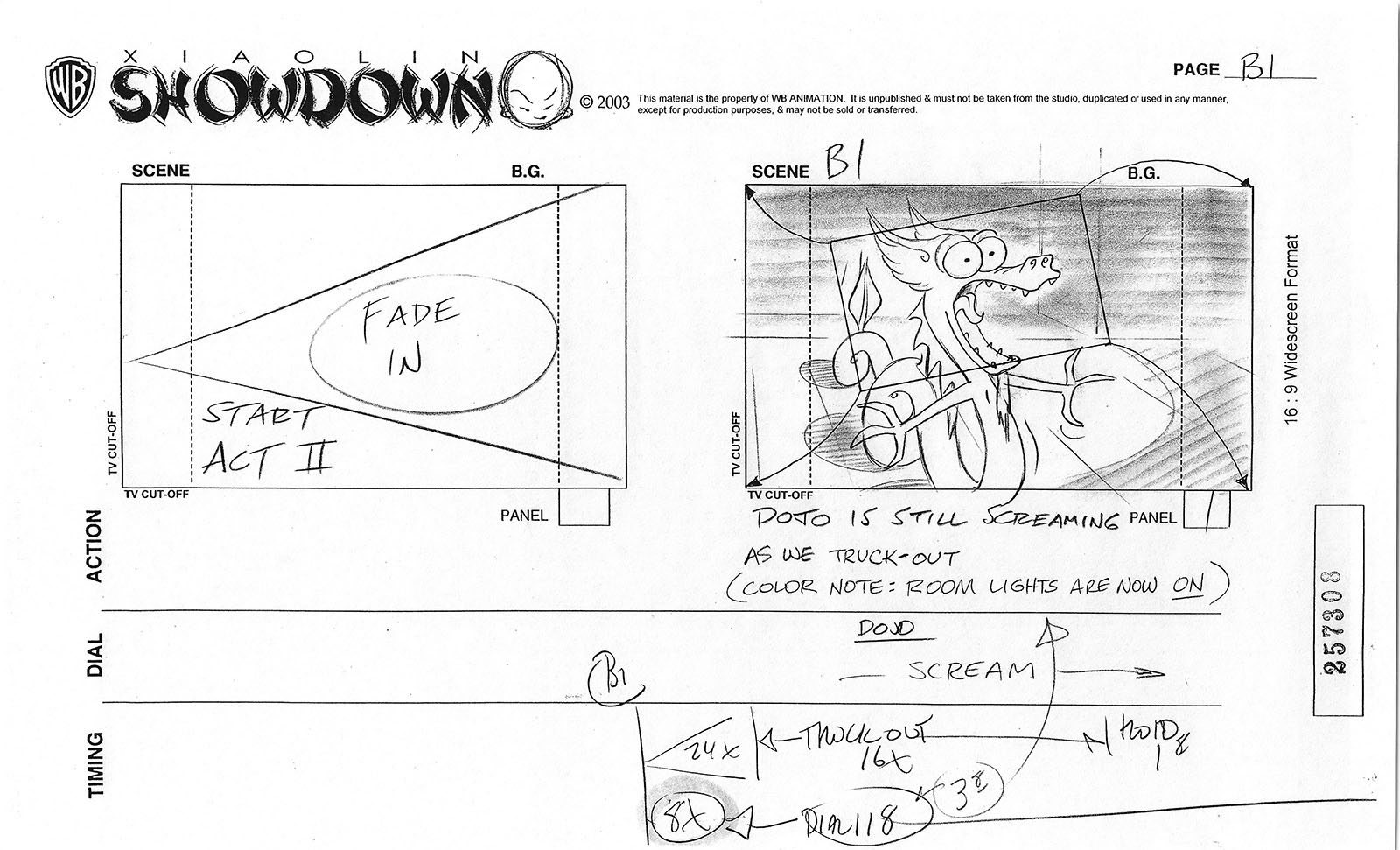Xiaolin Showdown Episode 8, 2004
After working on a few different TV series, I formed a theory that it takes three episodes to truly get a grip on the world you’ve entered.
On your first episode, you only have external references to go on. You know what things are meant to look like, you’re told what sort of relationships exist between the characters, and if you’re lucky there’s a finished storyboard or two available for reference. Having all that at your fingertips is priceless, but it’s very different from living inside the world it defines.
When you get a script, it’s your responsibility to interpret it into frames and scenes that proceed with authority, as if you’re one of the gods of that world with control over what happens there. The character performances you come up with have to be consistent not only with what came before you stepped in, but with what hasn’t been imagined yet. For a brief time, you’re unified with the characters and acting as they would act. You make decisions on their behalf.
When you turn your storyboard over to the “authorities” (either a director or a producer), that’s when you find out how accurate your guesses were. A good director or producer will do what they can to reduce that guesswork from the beginning, but they can’t possibly eliminate it because every script has its own unique requirements. Plus, if it’s still early in the life of a show, they might be figuring it all out on the fly, too. When they like what they see, they adopt it into the canon. If not, new rules are laid down.
On your second episode, you have the experience of the first to inform your creative choices. If you went too far in one direction last time, you might go in the other direction this time. If something you did last time sparked new thinking, you might push it farther this time. Unless you completely misunderstood the lessons of your first round, you’ll get more things right on the second round.
When you get to number three, you’ve got two episodes worth of experience and you know where the fences are. Now, if you’ve paid close attention and taken all the input to heart, you’re ready to take a role as an active participant in the building of this world.
That’s where my assistant Jeff Allen and I were when we took on this episode of Xiaolin Showdown. We’d already taken to the show like fish to water from the beginning, but now that the 2-episode shakedown was behind us, we were in full command and our best stuff came pouring out. I did the initial thumbnail board for the show, Jeff spiced it up with additional jokes and sight gags of his own, and we drew the best-looking storyboards we could.
The thing about drawing storyboards is that you don’t often have time to make them look as good as you’d like. Most board artists are illustrators in their own right, and good drawings are a point of pride. But when you’re rushing to meet a deadline, you have to take lots of shortcuts and leave out details that animators can put in later. After all, you’re not delivering a finished show, you’re creating a blueprint for one. Chances are, nobody outside the production will ever see what you’ve done.
That’s why every single storyboard artist needs to set up their own version of ArtValt. We all have a storyboard in our portfolio that we’re particularly proud of, whether it’s from our third episode or our thirtieth, that we invested with extra effort to make it look as good as possible, no matter how much time it took. Sometimes it’s better than the show it led to, since timers and animators don’t always interpret it the way we hope they will. That makes it the purest form of the story.
Episode 8 of Xiaolin Showdown, packed full of gags and drawn with authority, is in that category. I share it here with immense pride from start to finish.








